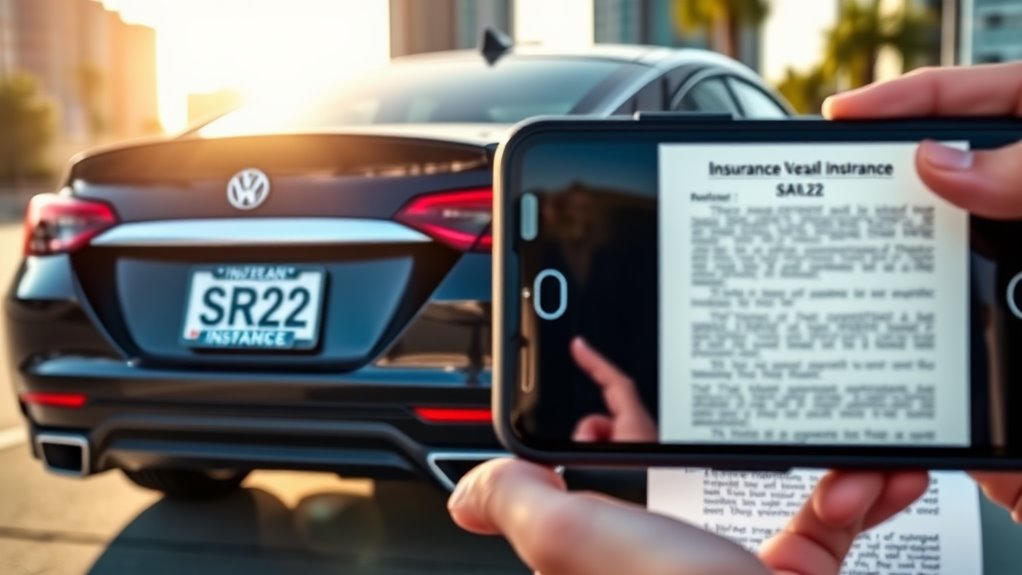What Is SR22 Insurance for Vehicle Registration?
Imagine being in a car chase scene, but instead of excitement, you face the reality of needing SR-22 insurance for vehicle registration. This isn't a traditional policy; it's a certificate proving you have the necessary liability coverage required by your state. If you've had serious driving violations, understanding how SR-22 works is essential for keeping your driving privileges intact. What do you need to know to navigate this process effectively?
If you've faced serious driving violations, you might need an SR-22 to maintain or reinstate your driving privileges. An SR-22 isn't an insurance policy in itself, but rather a document that proves you have the minimum required liability insurance. This form is vital for demonstrating that you're meeting your state's financial responsibility requirements, especially after serious offenses like DUI or reckless driving.
If serious driving violations have occurred, an SR-22 may be necessary to prove your liability insurance and regain driving privileges.
Each state has different requirements regarding the SR-22, and some may not even require it at all, so understanding your local laws is essential. SR-22 insurance is commonly mandated after DUI, reckless driving, or serious traffic violations, which underscores the importance of understanding when it applies. In some cases, you may also consider exploring affordable SR-22 insurance options to help manage costs.
You may need an SR-22 if you've been convicted of driving under the influence (DUI) or driving while intoxicated (DWI). Serious offenses like hit-and-run accidents or multiple traffic violations within a short time frame can also trigger the need for this document.
If your license has been suspended, you'll likely be required to file an SR-22 to regain your driving privileges. Even if you don't own a vehicle, an SR-22 may still be necessary, as it's a requirement for all drivers seeking to prove their financial responsibility.
There are different types of SR-22 certificates. An owner certificate covers your personal vehicle, while an operator certificate applies to vehicles you may drive that aren't owned by you. The owner-operator certificate provides coverage for all vehicles you operate, and if you don't own a vehicle, a non-owner policy is vital.
Be aware that some states might use different terms, like the FR-44, so it's good to familiarize yourself with your state's specific language and requirements.
Obtaining an SR-22 involves a few important steps. First, you should contact your insurance provider and inform them of your need for an SR-22. They'll need to adjust your policy accordingly to meet state requirements.
After that, your insurer will file the SR-22 form with your state's Department of Motor Vehicles (DMV). This process can vary, so it's wise to shop around and compare quotes from multiple insurance companies. Rates can differ considerably, and you might find a more affordable option if you take the time to explore.
Typically, an SR-22 is required for about three years, but this duration can vary based on the nature of your offense and your state's rules. More serious infractions, like DUIs, may extend this period.
It's essential to maintain continuous coverage during this time; failing to do so can result in further license suspension. Additionally, your insurance company must inform the DMV if your coverage lapses, so staying on top of your policy is key.
Conclusion
In conclusion, SR-22 insurance serves as an important verification of your vehicle's liability coverage, especially after serious driving violations. It's crucial for restoring your driving privileges and staying compliant with state laws. By diligently dealing with the details of your SR-22 filing, you can drive confidently and avoid future fines. Remember, securing suitable coverage and satisfying state stipulations swiftly saves you from stress and guarantees smoother journeys ahead.
